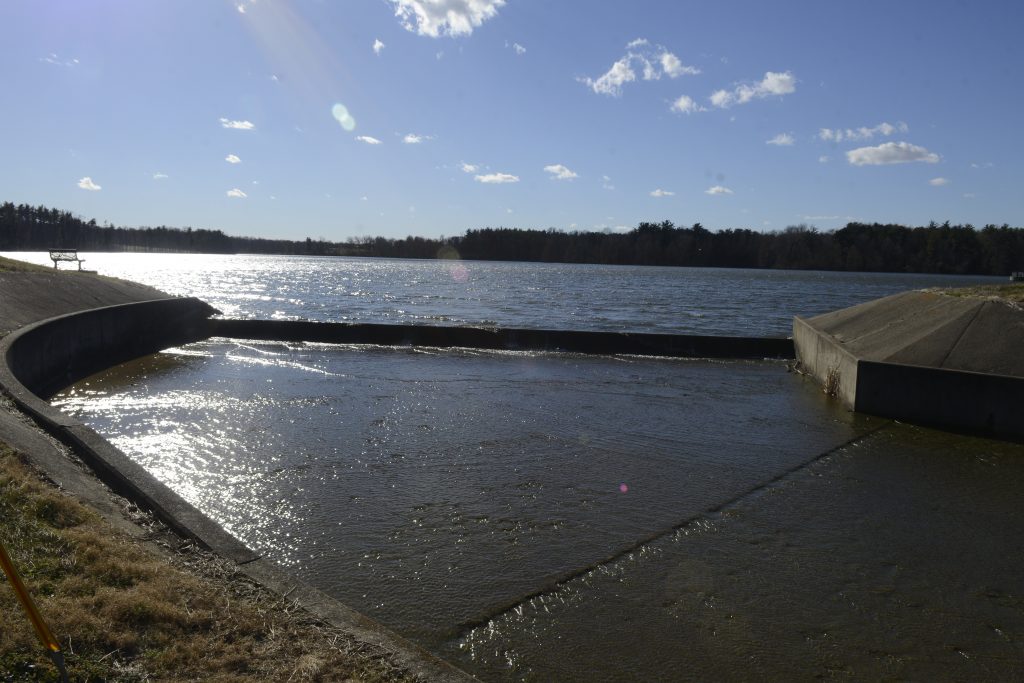March 11, 2019 – by Olivia Ingle in the DuBois County Herald

Officials involved with the proposal of locating Riverview Energy’s direct coal hydrogenation plant on the north side of Dale are considering options for discharge of the plant’s wastewater, and Huntingburg has been included in the conversation.
Huntingburg Mayor Denny Spinner said any conversation has been “very informal,” however, he was told that if the plant goes in, the company will be looking for places to accept the water discharge.
“They asked if water resources were available, would Huntingburg be interested? I said we’d be interested,” Spinner said.
He added: “As mayor, I responded by saying we would like to be a part of that conversation, because I believe it’s in the city’s best interest to be informed of all the potential effects such a project should have on our city if it is approved.”
Huntingburg is in the midst of planned water upgrades, and Spinner said the city is “always looking” for other water resources.
However, he said there has been no proposal brought by Riverview Energy or any other officials involved with the proposed Dale project.
“Should there be any proposal, it would be thoroughly studied by the city [and] our water department to determine what’s in the best interest of the city,” Spinner said. “If it has any merit at all, it would go through the full review process from our utility board.”
Riverview Energy has proposed a $2.5 billion direct coal hydrogenation plant — also referred to as a coal-to-diesel plant — to be located on more than 500 acres of newly-annexed land on the north side of Dale.
According to the company, “direct coal-hydrogenation is a unique clean-coal technology that uses pressure and hydrogen to convert coal into ultra-low diesel fuel.”
It would convert 1.6 million tons of coal, and produce 4.8 million barrels of clean diesel and 2.5 million barrels of Naphtha each year.
Riverview Energy has stressed the process doesn’t burn or gasify coal.
In its air permit application to the Indiana Department of Environmental Management, Riverview Energy proposed its water supply to come via pipeline from the Ohio River. It also proposed that the plant’s processed wastewater leave the same way, once treated, back to the Ohio River
John Blair, president of the environmental group Valley Watch and an active member of the Spencer County Citizens for Quality of Life group opposed to Riverview Energy’s project, heard about Huntingburg being approached for Riverview’s water when someone gave him a recording of a telephone conversation Spinner had about it with the Indiana Economic Development Corporation. Blair is worried about the contaminants that could be in the discharge water.

“The whole idea of taking refinery wastewater and putting it in a drinking water lake … is preposterous to me,” he said. “I don’t even know why they’d come up with that idea.”
In the recording, Spinner is heard asking questions about the water, such as: What is the state of the water when we receive it? Would there be a cost for us to accept it? Can our water facility handle more water? Are we only part of the solution?”
The representative with the Indiana Economic Development corporation didn’t have any answers for him.
Spinner did say that “in initial talks, [the discharge water] would just be introduced into our current reservoir, lake, and then it would go through our treatment plant to be treated for consumption by the citizens and by our own industry. We would still be, in essence, getting raw water, but it’s gone from the Ohio River, to this plant and then to us.”
Tom Utter, executive director of the Lincolnland Economic Development Corporation, is responsible for recruiting Riverview Energy to Spencer County. He’s also the one considering all possible options for the company’s water discharge. Besides Huntingburg, he wouldn’t divulge other possibilities.

He cited an Indiana Chamber of Commerce report completed in 2014 that indicated new development could put a strain on the state’s water supply in years to come.
“My job is to look at regional opportunities, and I thought, ‘Wow, if there’s a large project requiring a large volume of process water, what if the process water being planned for the project, what if we oversized the supply and made it available to other communities in the future, if they wanted it?” Utter said.
He believes Riverview Energy’s proposed plant could be that large project.
“If any additional water going into or toward that plant can be used for something, or if water coming out of it, I’ve got companies coming here and wanting to know if they can use it to create another business,” Utter said. “That is what economic developers are supposed to do. I just open it up to any possibility that’s out there. I don’t make the final decisions, but I certainly will open up the doors for opportunity.”
He sees a lot of potential opportunity the Riverview Energy plant could bring for economic development. For example, he said its resources, such as water, could help development at the Holland exit on Interstate 64, the Spencer County side of the Ferdinand exit on I-64 and the interchange at I-64 and U.S. 231 north of Dale.
“Having recruited a very large project, we’re looking to leverage it for the region in every way possible,” Utter said, “be that water, other forms of infrastructure, process water. If the discharge water can be used for another industry or to supply some needed benefit, very good.”
The Riverview Energy development is still in the permitting process and is currently awaiting a decision from IDEM on whether or not to issue the project an air permit.
IDEM is several months from making a final determination on the permit, according to agency spokesman Barry Sneed.
“Agency staff continue to work through the comments received during the notice period and at the public hearing,” he said in an emailed statement. “IDEM will address each comment submitted, and, due to the sheer volume and the highly technical aspects of many comments, and the detailed responses IDEM must draft, IDEM doesn’t expect to issue a decision for several months.”
Once the agency responds to the comments, the U.S. Environmental Protection Agency will have 45 days to review the permit before it’s issued.
“[If the] EPA does not approve the permit, they would either provide comments that IDEM would need to address or they would simply indicate that they have completed their review and that they have no comments,” Sneed said.

I learned about this from watching Eleanor Goldfield on FSTV, and it piqued my interest because I lived for many years in Evansville. This looks like a crazy scheme to try to rescue the coal industry, while lulling the locals into accepting a Flint-like water situation.
Tom Utter needs to understand that the most important use for water is drinking, then bathing, then cleaning. Economic development doesn’t even crack the top three. There is no telling what is in industrial waste water–literally. If it’s like fracking law, they don’t have to tell. So who knows if what’s in it gets filtered out? That’s “proprietary”. So,no, Dale–don’t do this. Water is too important to life to be left to the tender mercies of the fossil fuel industries.
We are paying a price for coal and nuclear that will grow exponentially in future years! Don’t compound the mistakes of the past by polluting our water! Listen to John Blair of Valley Watch and shame on ORSANCO for forsaking the trust of its people supporters.